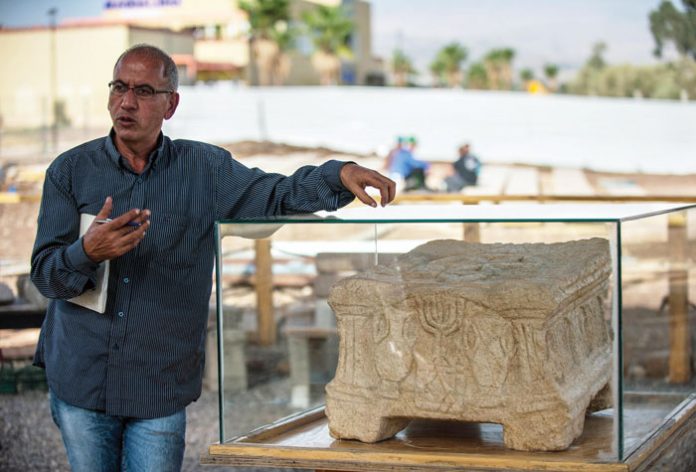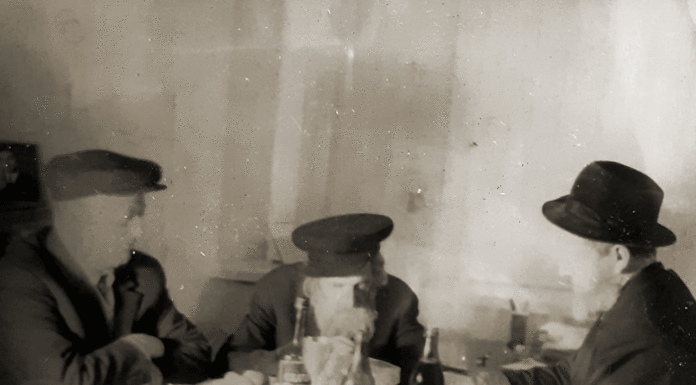The Jews of Rome and the authorities of the Vatican seem to have decided that if so many people believe that the Vatican has the Menorah in its posession, they might as well capitalize on this “urban myth,” as it has been described by Rome’s Chief Rabbi Riccardo Di Segni. They decided to put together a joint exhibition, with part of it in the Jewish Museum of Rome, near the Great Synagogue, and the other part in the Vatican Museum in Vatican City. This reminds me of a meeting I attended years ago at the Vatican Museum, where the then director jokingly pointed to a modern Israeli chanukiyah and said, “See, we have the Menorah!” The myth will never die, but the decision to hold this exhibit, aptly entitled “Menorah: Cult, History and Myth,” has certainly been a wonderful result of its longevity.
In fact, it is an example of the expanded cooperation between the Vatican Museum and Library, and Jewish and Israeli cultural institutions. It was not long ago that the Vatican exhibited some magnificent illuminated Rambam manuscripts at the Israel Museum in Yerushalayim. The present exhibit, which took over three years to organize, is the joint effort of Barbara Jatta, Director of the Vatican Museums, and Alessandra Di Castro, Director of Rome’s Jewish Museum. Clearly, this kind of concrete cooperation results from the Vatican’s Nostre Aetate document issued in 1965. It redefined Catholic attitudes about Judaism and formally rejected anti-Semitic beliefs and practices. Vatican recognition of the State of Israel and establishment of diplomatic relations in 1993 was another milestone in this process. While there is still much to be accomplished, and things are certainly not perfect, this exhibit is certainly an example of changed attitudes.
The centerpiece of the exhibit is the earliest known menorah to be found in a synagogue, that of the amazing Magdala Stone. This phenomenal archaeological discovery is still little known outside of a small group of academic professionals. Thanks to the exhibit, we will all have a chance to see it and learn of its enormous significance. But first, the rather amazing story of its discovery:
The small village of Magdala (Aramaic for tower; migdal in Hebrew), located on the western shore of the Kineret (Sea of Galilee), is of importance to the early history of Christianity. The full name of the town in rabbinic sources appears as either Migdal Nunaya (“Tower of Fish”; Pesachim 46b) or Migdal Tzabaya (“Tower of Dyers”; Yerushalmi Taanis 4:8, 69a). It is also known in Greek as Taricheae ([Tower] “of the Fish Salters”), likely due to the town’s famed fish-curing industry that is closely connected with fishing in the Sea of Galilee.
Because of its significance in Christian history, its Bayis Sheini-period remains were excavated by the Franciscan Catholic order, which had legal claim to its southern part.
Another Catholic order had acquired the northern part of what was ancient Magdala, intending to build a retreat center and a new church. In the process, as is required for all building projects in Israel, archaeologists from the Israel Antiquities Authority had to certify that the site was free of archaeological remains and that it could be built upon. In examining the northern area directly west of the sea, only 20 inches or so deep, they immediately came upon remains from the Hasmonean and early Roman periods; they were uncovering 1st century BCE and 1st century CE Magdala. They came upon a building approximately 120 meters square that they quickly realized was an ancient synagogue. It was beautifully decorated, and somewhat close to the center of the main hall they uncovered this amazing artifact, known as the Magdala Stone, now on exhibit in Rome.





















